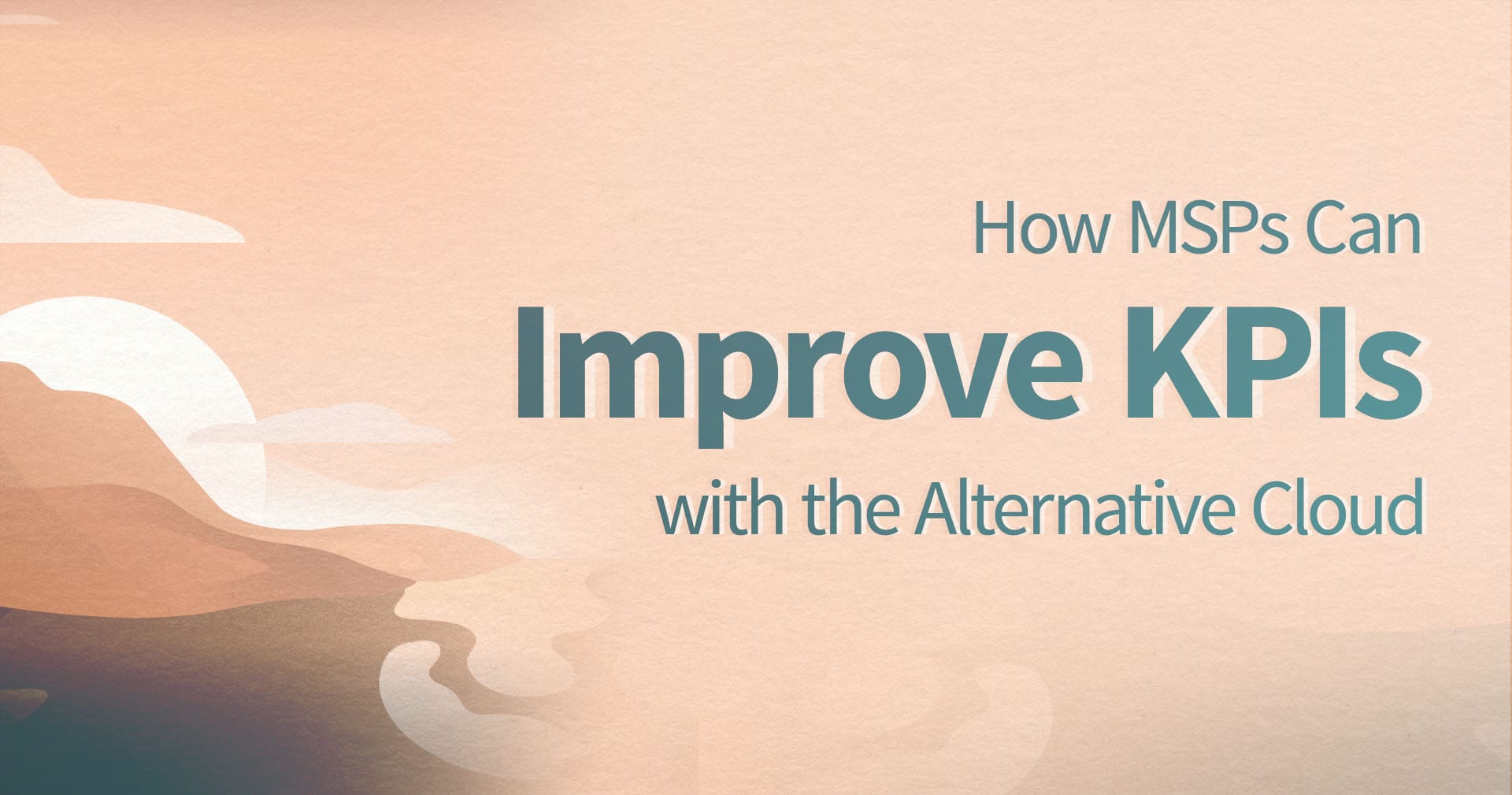In this blog post series, we’re previewing chapters in our latest ebook, The MSP’s Guide to Modern Cloud Infrastructure. In the second post in the series, we highlight the chapter, “Improving KPIs with the Alternative Cloud,” and two essential data points that help ensure Managed Service Providers (MSPs) generate profits when choosing an alternative to AWS, Google Cloud, and Microsoft Azure.
The MSP’s Guide to Modern Cloud Infrastructure features Richard Tubb, a former managed service provider (MSP) business owner who now helps other MSP businesses make more money. He also is the author of the book “The IT Business Owner’s Survival Guide.” Richard provides the ebook’s foreword as well as commentary at the end of each chapter. His “Tubb’s Takes” offer a unique perspective on topics such as:
- Understanding the Cloud Provider Landscape
- Improving KPIs with the Alternative Cloud
- Alternative Cloud Use Cases
- Security and the Alternative Cloud
- Alternative Cloud in Action
There are many ways to optimize operational metrics and Key Performance Indicators (KPIs). Many involve hard work: You must tediously evaluate your current operations and find ways to implement small improvements. But there’s a straightforward strategy that, in many cases, can dramatically improve your outcomes. By integrating an alternative cloud into the infrastructure that drives your operations, you can capitalize on various opportunities to optimize your operational performance and, ultimately, profitability.
Here’s a look at essential metrics and KPIs and alternative cloud providers’ roles in improving them.
Churn Rate
Churn rate measures how long you retain customers. More churn lowers profits. It also translates to more time and money spent on acquiring new customers, which, as any good marketer will tell you, costs from 5 to 25 times as much as retaining existing customers.
Average churn rates vary widely between MSPs. Ideally, your churn rate will be zero, although a 10% or lower churn rate is typically considered good. Thus, minimizing your churn rate makes your business simpler to operate while also improving profits.
Alternative clouds can help you achieve this goal in two main ways. First, adding an alternative cloud is a great way to improve service availability and performance by allowing you to keep services operational if your main public cloud fails. Second, because alternative clouds often offer lower pricing than the larger public cloud providers, alternative clouds can help you reduce the prices of your services. In turn, they’ll help you retain customers by offering services at a lower cost than the competition, without sacrificing your profit margin.
SLA Compliance Rate
Your sla compliance rate indicates your ability to meet SLA guarantees. If you don’t deliver on the availability and performance you promise to your customers, they’re not likely to remain your customers very long. Poor SLA compliance could also trigger contractually-mandated discounts or lower pricing, which harm your profit margins.
You might think that the typical MSP would excel at SLA compliance, given that delivering managed services reliably is a core component of any MSP’s mission. But the reality is that average compliance rates are as low as 80%—not exactly an impressive figure.
As an MSP, you can stand apart from the crowd and improve your SLA compliance rates by ensuring that the infrastructure powering your managed services is as reliable as possible. Alternative clouds provide a second infrastructure set to keep your workloads running if another cloud fails. In addition, you might find that the SLA guarantees made by alternative cloud providers exceed the SLAs of major public clouds, also helping you maximize your SLA compliance.
Additional KPIs in this chapter include Average Revenue Per User, Cost Per Ticket, and Mean Time to Resolve (MTTR). Download your free copy of The MSP’s Guide to Modern Cloud Infrastructure here.






Comments